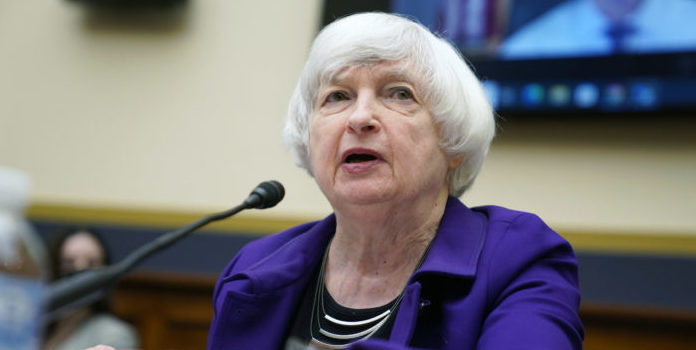(Molly Bruns, Headline USA) Treasury Secretary Janet Yellen said in an interview that the U.S. economy may not necessarily be headed for a recession even if the gross domestic product experiences two consecutive quarters of decline.
On NBC’s “Meet the Press,” Yellen acknowledged that most economists define a recession as two consecutive quarters of negative GDP growth, but emphasized “that is not the technical definition,” The Daily Wire reported.
“There is a ton of data coming out this week; it’s probably a fun week for an economist because we are going to have consumer confidence survey, inflation numbers for June,” host Chuck Todd said.
“Which is the indicator? What’s the number you’re most focused on that will give you a better indication of where this economy is headed?”
Yellen gave a long-winded response, calling two quarters of negative GDP growth an economic “contraction.”
“Well, I look at all the data, and GDP will be closely watched,” Yellen replied. “But I do want to emphasize: what a recession really means is a broad-based contraction in the economy.
“And even if that number is negative, we are not in a recession now, and I would, you know, warn that we should be not characterizing that as a recession,” she concluded.
Todd challenged Yellen, arguing with her use of misleading words.
“That’s not the technical definition,” Yellen retorted. “There is an organization called the National Bureau of Economic Research that looks at a broad range of data in deciding whether or not there is a recession.
“And most of the data that they look at right now continues to be strong,” she continued. “I would be amazed if the NBER would declare this period to be a recession, even if it happens to have two-quarters of negative growth.”
Economist Julius Shiskin published several rules to identify recessions in 1974; two consecutive quarters of declining GDP is the most popular and now standard definition.
Yellen, however, prefers the definition given by the National Bureau of Economic Research (NBER): “a significant decline in economic activity spread across the economy, lasting more than a few months, normally visible in real GDP, real income, employment, industrial production, and wholesale-retail sales.”
NBER is “generally recognized” as the group that defines the beginning and end of recessions in the U.S.

